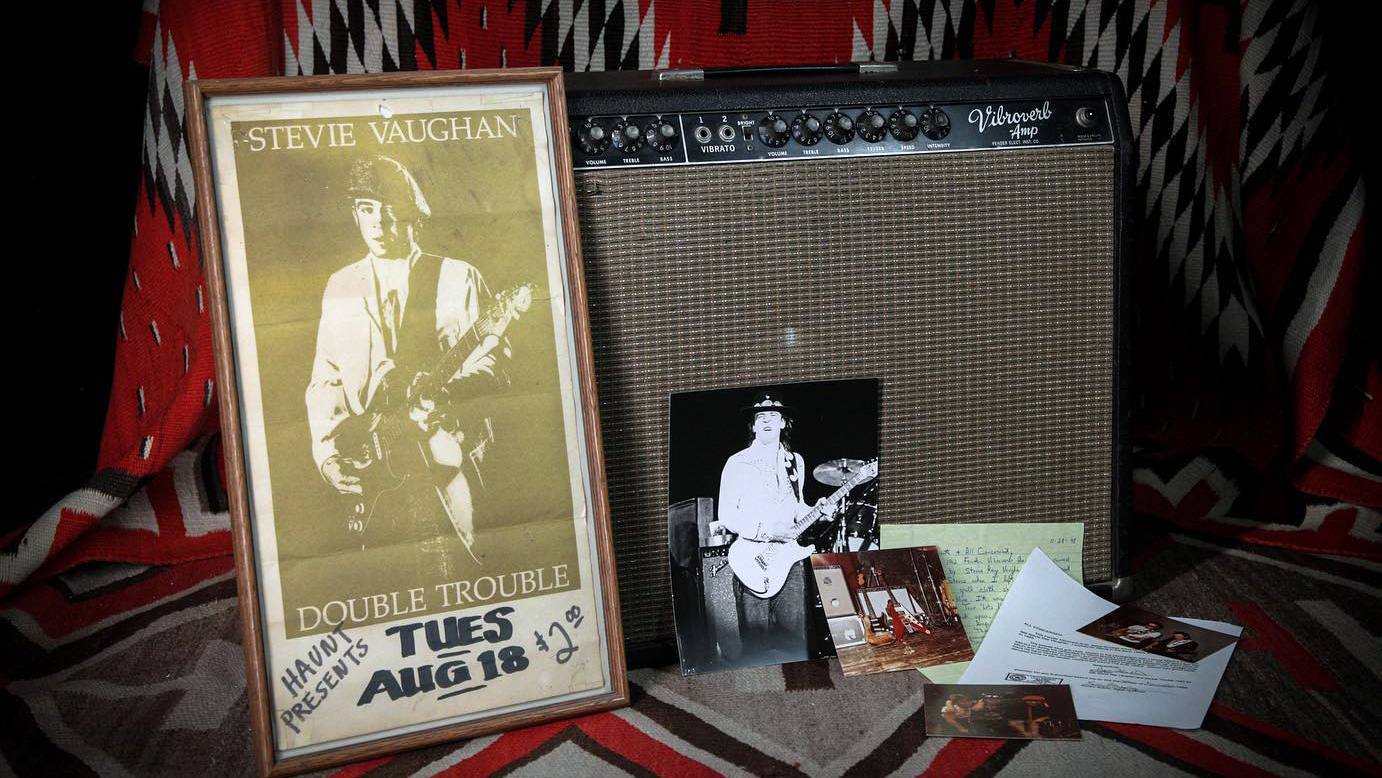Stevie Ray Vaughan’s 1964 Fender Vibroverb, used on David Bowie’s Let’s Dance, is up for sale
The Vibroverb was an integral component of the blues hero’s legendary cranked-up tone

Scores of guitarists have sought to nail the coveted “SRV tone” over the decades, and now there’s an opportunity to get one step closer.
Nashville vintage guitar outlet Rumble Seat Music has acquired the 1964 Fender Vibroverb guitar amp that Vaughan owned and played through for his seminal work on David Bowie’s smash 1983 album, Let’s Dance.
Rumble Seat recently posted photos of the amp, which is accompanied by a poster promoting Double Trouble, a handwritten note, photos and other documentation.
Beyond the fact that it was a huge success, Let’s Dance represents a significant moment in SRV history as it was the guitarist’s introduction to mainstream audiences.
Bowie met Vaughan at the 1982 Montreux Jazz Festival. Despite the fact that SRV’s set there was reportedly not well-received, Bowie was so impressed that he later said, "[He] completely floored me. I probably hadn't been so gung-ho about a guitar player since seeing Jeff Beck with his [pre-Yardbirds] band, the Tridents."
Bowie later called and invited Vaughan to the studio where he was working on Let’s Dance.
In addition to his now famous solo on the title track, Vaughan contributed to five other cuts, including Cat People (Putting Out the Fire) and China Girl.
Get The Pick Newsletter
All the latest guitar news, interviews, lessons, reviews, deals and more, direct to your inbox!
Of Bowie, Vaughan once said, "To tell you the truth, I wasn't very familiar with David's music when he asked me to play on the sessions. ... David and I talked for hours and hours about our music, about funky Texas blues and its roots. I was amazed at how interested he was."
He was apparently interested enough to also bring Vaughan onboard to his live band for the accompanying Serious Moonlight tour. The two artists, however, quickly butted heads. Vaughan was resistant to Bowie’s stage choreography, and he was also prevented from promoting his forthcoming debut album, Texas Flood, which was scheduled for release at the time.
Bowie’s management decided to let Stevie open select dates on the tour, but shortly before the tour began, they reneged. Not only would they not allow Double Trouble to open for Bowie, but Stevie couldn’t give interviews about his album while on tour for Bowie. SRV never got to decide whether or not to stay with Bowie. Chesley Millikin, his manager, did it for him.
Moments before Stevie boarded Bowie’s bus, the tour manager pulled his gear and bags off the vehicle. The bus took off without him, leaving SRV on the sidewalk with no idea what to do next. With his new freedom, Stevie put his attention on promoting Texas Flood and turned the loss into a gain.
Vaughan talks briefly about Bowie in the above clip from a 1986 interview on a New Zealand TV show. Head to 1:30 to hear him discuss their time together.
Let’s Dance, of course, became a massive hit, selling more than 10 million records worldwide. The title track, meanwhile, hit Number One on the Billboard singles chart.
Vibroverb combos, meanwhile, were the source of Vaughan’s cranked-up overdrive tones – in conjunction with an Ibanez Tube Screamer – throughout the ‘80s. For more on SRV’s amp setup, check out Guitar World’s in-depth guide to the amps and effect pedal in Stevie Ray Vaughan’s arsenal.
Rich is the co-author of the best-selling Nöthin' But a Good Time: The Uncensored History of the '80s Hard Rock Explosion. He is also a recording and performing musician, and a former editor of Guitar World magazine and executive editor of Guitar Aficionado magazine. He has authored several additional books, among them Kurt Cobain: Montage of Heck, the companion to the documentary of the same name.
“What blew me away was that everyone wanted the curly maple top. People were calling, saying, ‘I’ve got to have the bird inlays’”: Paul Reed Smith on raising the Standard 24, finally cracking the noise-free guitar and why John Sykes is a tone hero
“It combines unique aesthetics with modern playability and impressive tone, creating a Firebird unlike any I’ve had the pleasure of playing before”: Gibson Firebird Platypus review










